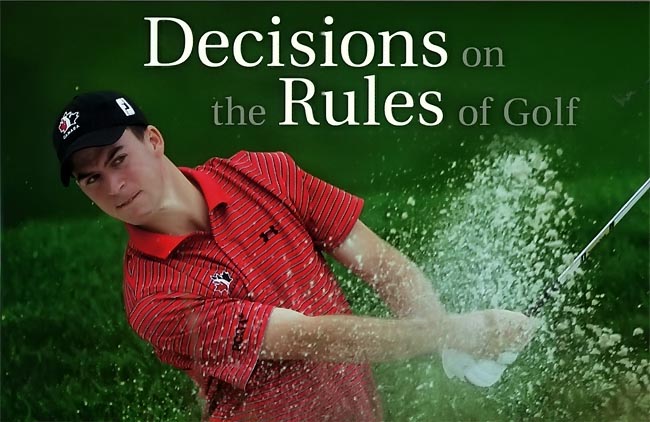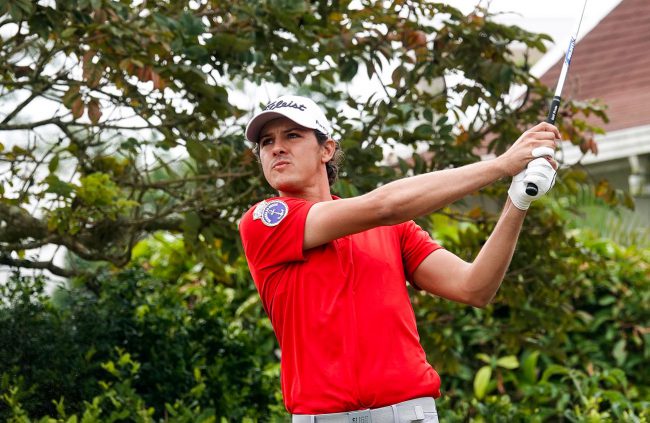07/04/2011

Incidentes como os que aconteceram com Padraig Harrington, em Abu Dhabi, e com Camilo Villegas, no Havaí, ambos em janeiro, quando infrações que eles não haviam percebido foram denunciadas por quem assistia ao jogo em televisões de alta definição, acarretando na desclassificação dos dois por assinar cartões sem as tacadas de penalidade correspondentes, não vão mais acontecer. O R&A e a USGA, as duas entidades que controlam o golfe mundial, decidiram adotar já a partir do Masters em caráter emergencial uma nova interpretação das regras, que ainda vai permitir punir os jogadores posteriormente à entrega de cartões, mas não mais acarretará em sua desclassificação.
A revisão da Decisão 33-7/4.5 fala sobre a situação em que um jogador não sabe que cometeu uma infração porque ele não conhecia os fatos em detalhes e nem tinha como tomar conhecimento deles de forma razoável antes de entregar o cartão. Pela revisão em vigor a partir de hoje, e a critério exclusivo do Comitê, o jogador ainda vai receber a penalidade correspondente à sua infração, mas não será desclassificado.
Interpretação – Isso não servirá de desculpar para o jogador que errou por não conhecer as Regras de Golfe. Mas a nova interpretação reconhece que em raras situações é razoável que o jogar não saiba que cometeu uma infração, só percebida com ajuda de tecnologia como televisões de alta definição. Harrington, por exemplo, viu sua bola oscilar quando foi retirar a moeda que a marcava no green, mas não viu e nem tinha como ver que ela parou um dimple e meio para frente, ou seja, poucos milímetros. No caso de Villegas, ele moveu sem perceber um pedaço de grama ao lado de um divot quando sua bola ainda estava em movimento.
“Nós já vínhamos discutindo como mudar isso, quando e algumas limitadas circunstâncias, a desclassificação é uma penalidade exagerada para a infração”, explicou
Peter Dawson, executivo-chefe do R&A. “A alteração mostra nosso desejo de que as Regras de Golfe sejam justas”, diz. “Essa é uma mudança lógica e um importante passo para reavaliar as Regras de Golfe em função do impacto dos vídeos de alta definição no golfe”, completa Mike Davis, diretor executivo da USGA.
Atenção: Como não existe ainda a tradução oficial em Português, para ser incluída nas Decisões nas Regras do Golfe, publicamos abaixo o texto integral em inglês, para conhecimento dos árbitros e estudiosos de Regras
A. Generally, the disqualification prescribed by Rule 6-6d must not be waived or modified.
However, if the Committee is satisfied that the competitor could not reasonably have known or discovered the facts resulting in his breach of the Rules, it would be justified under Rule 33-7 in waiving the disqualification penalty prescribed by Rule 6-6d. The penalty stroke(s) associated with the breach would, however, be applied to the hole where the breach occurred.
For example, in the following scenarios, the Committee would be justified in waiving the disqualification penalty:
A player makes a short chip from the greenside rough. At the time, he and his fellow-competitors have no reason to suspect that the player has double-hit his ball in breach of Rule 14-4. After the competitor has signed and returned his score card, a close-up, super-slow-motion video replay reveals that the competitor struck his ball twice during the course of the stroke. In these circumstances, it would be appropriate for the Committee to waive the disqualification penalty and apply the one-stroke penalty under Rule 14-4 to the player’s score at the hole in question.
HD technology contributed to the revision of the Rules
*After a competitor has signed and returned his score card, it becomes known, through the use of a high-definition video replay, that the player unknowingly touched a few grains of sand with his club at the top of his backswing on a wall of the bunker. The touching of the sand was so light that, at the time, it was reasonable for the player to have been unaware that he had breached Rule 13-4. It would be appropriate for the Committee to waive the disqualification penalty and apply the two-stroke penalty to the player’s score at the hole in question.
*A competitor moves his ball on the putting green with his finger in the act of removing his ball-marker. The competitor sees the ball move slightly forward but is certain that it has returned to the original spot, and he plays the ball as it lies. After the competitor signs and returns his score card, video footage is brought to the attention of the Committee that reveals that the ball did not precisely return to its original spot. When questioned by the Committee, the competitor cites the fact that the position of the logo on the ball appeared to be in exactly the same position as it was when he replaced the ball and this was the reason for him believing that the ball returned to the original spot. As it was reasonable in these circumstances for the player to have no doubt that the ball had returned to the original spot, and because the player could not himself have reasonably discovered otherwise prior to signing and returning his score card, it would be appropriate for the Committee to waive the disqualification penalty. The two-stroke penalty under Rule 20-3a for playing from a wrong place would, however, be applied to the player’s score at the hole in question.
For example, in the following scenarios, the Committee would not be justified in waiving or modifying the disqualification penalty:
* As a player’s ball is in motion, he moves several loose impediments in the area in which the ball will likely come to rest. Unaware that this action is a breach of Rule 23-1, the player fails to include the two-stroke penalty in his score for the hole. As the player was aware of the facts that resulted in his breaching the Rules, he should be disqualified under Rule 6-6d for failing to include the two-stroke penalty under Rule 23-1.
* A player`s ball lies in a water hazard. In making his backswing for the stroke, the player is aware that his club touched a branch in the hazard. Not realising at the time that the branch was detached, the player did not include the two-stroke penalty for a breach of Rule 13-4 in his score for the hole. As the player could have reasonably determined the status of the branch prior to signing and returning his score card, the player should be disqualified under Rule 6-6d for failing to include the two-stroke penalty under Rule 13-4. (Revised)

Como chegar. Dicas de hospedagem e alimentação. Preços e serviços

Aproveite o acordo entre a Pousada Travel Inn Trancoso e o Terravista Golf Course

Paris 2024: Corrida olímpica começa com o brasileiro Rafa Becker entre os Top 50
21/09/2024
20/09/2024
19/09/2024
18/09/2024
18/09/2024
18/09/2024
© Copyright 2009 - 2014 Golfe.esp.br. Todos os direitos reservados